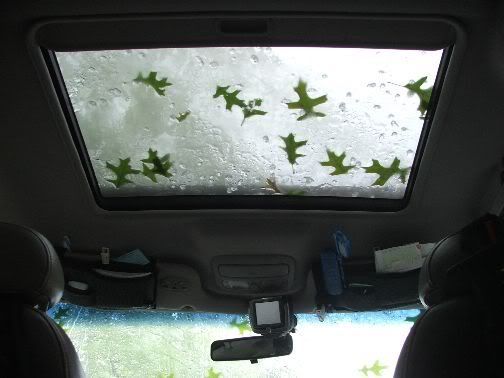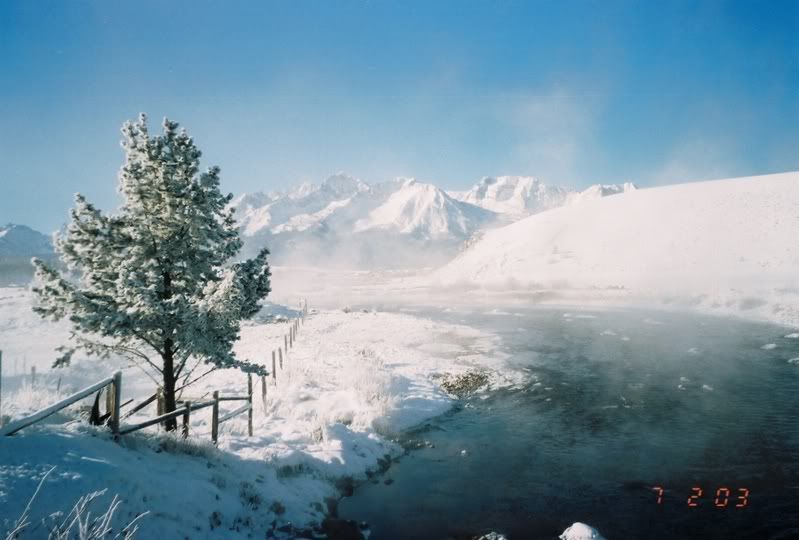|
Basic HTML Formatting (and conversions for use on meetchristians.com)
Click on the formatting feature you are seeking:
Internet Explorer Users: MeetChristians.com has disabled HTML formatting in forum postings. There are, however, some alternate codes that will be converted into HTML by our software. If you use these codes in your post, the code will not appear when your post is viewed. Only the formatting effect will be visible. Please note that all these codes are lowercase (opposite of capital letters). If you are using a javascript compatible browser, you will see the following buttons on your post form. You can simply highlight the text you want to format, and then press the appropriate button to format it. Inserting the code manually will work also. Down near the middle of this page under the title Additional Tools are a few bonus features that can be coded into forum postings, though must be done manually. Instructions are included. Also, under the Photos heading are instructions that extend the basic capabilities of the Internet Explorer button, including of course explaining how to get a photo online so that it can be shown in the forums or your profile here on the site. Users may include extra colors for the text in forum postings. They are in the Font Color section below. In the end, reading this entire page (aside from a couple paragraphs) will be useful to all users. YouTube and other videos can be linked in the forum by a special method described near the bottom. They can be embedded in your profile using the normal html coding. Other Browsers (Firefox, Netscape, etc) If you do not have a javascript compatible browser, the above buttons will not appear on the post form. In that case you can insert the codes below (in red) to format your text. Bold print: You can make print bold by placing a [b] in front of where you want the bold print to start, and a [/b] where it should end. Italics print: Text is rendered in italics by placing a [i] in front of where you want the italics print to start, and a [/i] where the italics should end. Underline print: For an underline, place a [u] in front of where the underlined print is wanted to start, and a [/u] where the formatting should end. Font Size: Font size can be increased by placing the [s2] tag in front of where the font size should start, and a [/s] where you want the font size to end. You can also use [s3] for this size[/s] or [s4] for this size[/s]. A smaller than normal font size can be created by using a 1 in the size command, ending up with [s1] in front of where you want the font size to start, and a [/s] where the modification should end. Font Color: The original 3 colors, red, green and blue. Font color can be changed by using [c=g]for GREEN then typing [/c] for returning to a font color of black. You can also use [c=b]for BLUE[/c] and [c=r] for RED[/c]. Combinations: You can combine all of these by [b][i][u][s2][c=b] in front of where you want the font style to start, and a [/s][/b][/u][/i][/c] where you want the font size to end. Some other colors: Almost all of the common colors you can think of have been made available through an alternate method of coding. Use the following command pair: [color=violet]to change color of the text between that symbol and [/color] the remainder of your text. Change the word "violet" for whatever color wanted. Available colors currently are:
blueviolet // brown // cyan // darkblue // darkcyan // fuchsia // gold // gray // indigo // lavender (lavender) // maroon // mediumblue // olive // orange // pink // purple // seagreen // slategray // teal // violet // white (white) // yellow (yellow) Links: You can provide a link in your message that opens the web page in a new window by using [url]http://www.geocities.com/mylink.html[/url] Everything that comes after the domain name is case sensitive. Photos: Would you like to paste in a photo that is not one of the two pictures you uploaded to this web site? You can do it! You might want to include your own icons or photos of MC gatherings or a picture of your new sports car. Here's how it's done: 1. Upload the photo to one of the free web servers that store photos online. There are many.... PhotoBucket.com villagephotos.com, etc. 2. Where you want the photo to appear, place this tag [img] in front of the full address to the photo, and this tag [/img] at the end of that address. Example: [img]http://www.photobucket.com/myphotos/VillagerHailStorm.jpg[/img] Produces this: 
Everything that comes after the domain name is case sensitive. PhotoBucket (others may also) offers the address in 3 styles of code already formatted. Choose the one with the IMG tags, then simply paste the entire sequence in the forum post where you desire the picture to appear. 3. You can also specify the height or width of the photo in pixels like this: [img]http://www.photobucket.com/myphotos/my_sports_car.jpg height=300[/img] OR [img]http://www.photobucket.com/myphotos/my_sports_car.jpg width=300[/img] ei: 
NOTE: To keep from expanding the width of the forum beyond normal viewing range, we recommend using a width setting of 700 or less with photos that are larger to begin with. 4. You may place the photo on one side and wrap the text around it like this: [img]http://www.photobucket.com/myphotos/idaho_morning.jpg height=200 align=right[/img]  Which results in a photo that allows text to be written right up close and to the side rather than all that blank space next to the image. This one in particular is from a winter day in central Idaho, by the way. The align=left attribute is available too. Which results in a photo that allows text to be written right up close and to the side rather than all that blank space next to the image. This one in particular is from a winter day in central Idaho, by the way. The align=left attribute is available too.
5. Images can be captured from other places on the web, such as a news site, and linked to a forum post. To do so, right-click on an image, then click PROPERTIES. From there, copy the "Address:" Paste into the composition screen where you type forum replies, then just make sure to add in (or click on in Internet Explorer) the img and /img tags. 6. Lastly, a few people have added extra images into their meetchristians profiles. That is done with plain old html coding. Like above, the images must first be uploaded to a server, such as photobucket.com. Or they might be part of a news article already online or from another website. The code for making them show up can be found here: echoecho.com/htmlimages02.htm Additional Tools: The following options mimic tools available in regular html, the only difference being the style of bracket surrounding the code. [blockquote] with [/blockquote] produces indented blocks of text minus the bullets or numbers included when using the UL or OL functions (introduced below). The corresponding text sits over here to the right of the the other material [hr] - Used without a closing tag, offers a "horizontal rule" or dividing line on the page, illustrated below and seen between many of the functions listed on this page. [hr][hr][hr] shows onscreen as: Lists: [b]My [u]unordered[/u] list goes below[/b]: [ul] [li]oranges[/li] [li]pears[/li] [li]nectarines[/li] [li]pumpkin pie[/li] [/ul] Coding like above will produce: My unordered list goes below:
Copy the sample code below for easy pasting into your document. Then just type your particulars in between the [li] and [/li] tags. [ul] [li] [/li] [li] [/li] [li] [/li] [li] [/li] [/ul] Nearly the same thing, except changing U for O provides a numbered (or ordered) list, such as: [b]My [u]ordered[/u] list goes below[/b]: [ol] [li]oranges[/li] [li]pears[/li] [li]nectarines[/li] [li]pumpkin pie[/li] [/ol] My ordered list goes below:
Copy the sample code below for easy pasting into your document. Then just type your particulars in between the [li] and [/li] tags. [ol] [li] [/li] [li] [/li] [li] [/li] [li] [/li] [/ol] [marquee], [/marquee] is available for scrolling text. [marquee]Like this... ... ... ... [/marquee] [strike] and [/strike] To strike out a [strike] [sub], [/sub] and [sup], [/sup] H20, for example, can be made to look the right way with the subscript command. H[sub]2[/sub]0 = H20 Superscript is generally used for literary citations pointing to footnotes. Example: While enroute to Biola University[sup]2[/sup] produces: While enroute to Biola University2 Inserting a youtube video or audio file into a forum post: [embed], [/embed] is available for embedding a video from another site. Doing so requires a wee bit of paying attention to the long address provided by youtube and other sites that host videos. What you want is to eliminate everything except what is written inside the existing <embed> and </embed> html tags, then adding the MC [embed] and [/embed] element tags in their place. In the following example, you would delete everything in gray: <object width="425" height="344"><param name="movie" value="http://www.youtube.com/v/0Y5_q-rWMkg&hl=en&fs=1"></param><param name="allowFullScreen" value="true"></param><embed src= "http://www.youtube.com/v/0Y5_q-rWMkg&hl=en&fs=1" type="application/x-shockwave-flash" allowfullscreen="true" width="425" height="344" ></embed></object> Note the initial <embed> tag includes the letters "src=" after a space <embed src= "...">, then finally concludes with the second part of the opening element tag > all the way after the height="344". So, the entire embed element is actually <embed src= "... ... ..." > You must eliminate everything in gray, leaving the actual address, in this case represented by 9 dots and two quote (") marks, all in bold in the example. The end result should look like the following: [embed]"http://www.youtube.com/v/0Y5_q-rWMkg&hl=en&fs=1" type="application/x-shockwave-flash" allowfullscreen="true" width="425" height="344"[/embed] Got that? Really, it will become fairly easy after plowing through the first attempt. A small tip for those using Internet Explorer: After deleting the unwanted characters, highlight the rest and choose one of the existing elements available for instant formatting (such as Bold or Italics). That will give you all the brackets in one click. Simply eliminate the "b" in [b], then type in embed. ie: [embed] The [QUOTE] / [ENDQUOTE] situation. These must always appear in pairs. Otherwise, the post formatting will go awry. If things begin looking weird while viewing a thread, the fault will probably be found in the last post that looks normal. If that last normal appearing post belongs to you, hit the MODIFY MY POST button. Your text will appear in composing format again. You may either scan visually OR use the browser's built-in SEARCH feature. For search, type CTRL-F. Then type in the word quote. Hit Find Next (Internet Explorer) or Next (Netscape/Firefox). The function will take you through each instance of the word quote (which will be found in the 'endquote' formatting code. Count to see if there is an imbalance between them. Four QUOTE tags require four ENDQUOTE tags. Excessively wide screen This occurs generally for one of two reasons: 1. An attached photo is wider than the default on the page. Rarely, the person posting the photo may want it to be that wide. On the other occasions, it is easy to modify image width by merely including the width=400 tag. The number (400) can be adjusted until deriving the desired size. See the section covering photos on this page. 2. Any unbroken string of text will force the screen wide enough to include whatever is written. Thus, a row of ............................................................. that go on beyond a certain point will result in the unwanted stretching of the forum thread because browsers are programmed to keep them together. In the instance above, they were dropped down onto a new line rather than be broken apart, which ended up in a blank finish to the preceding line. |